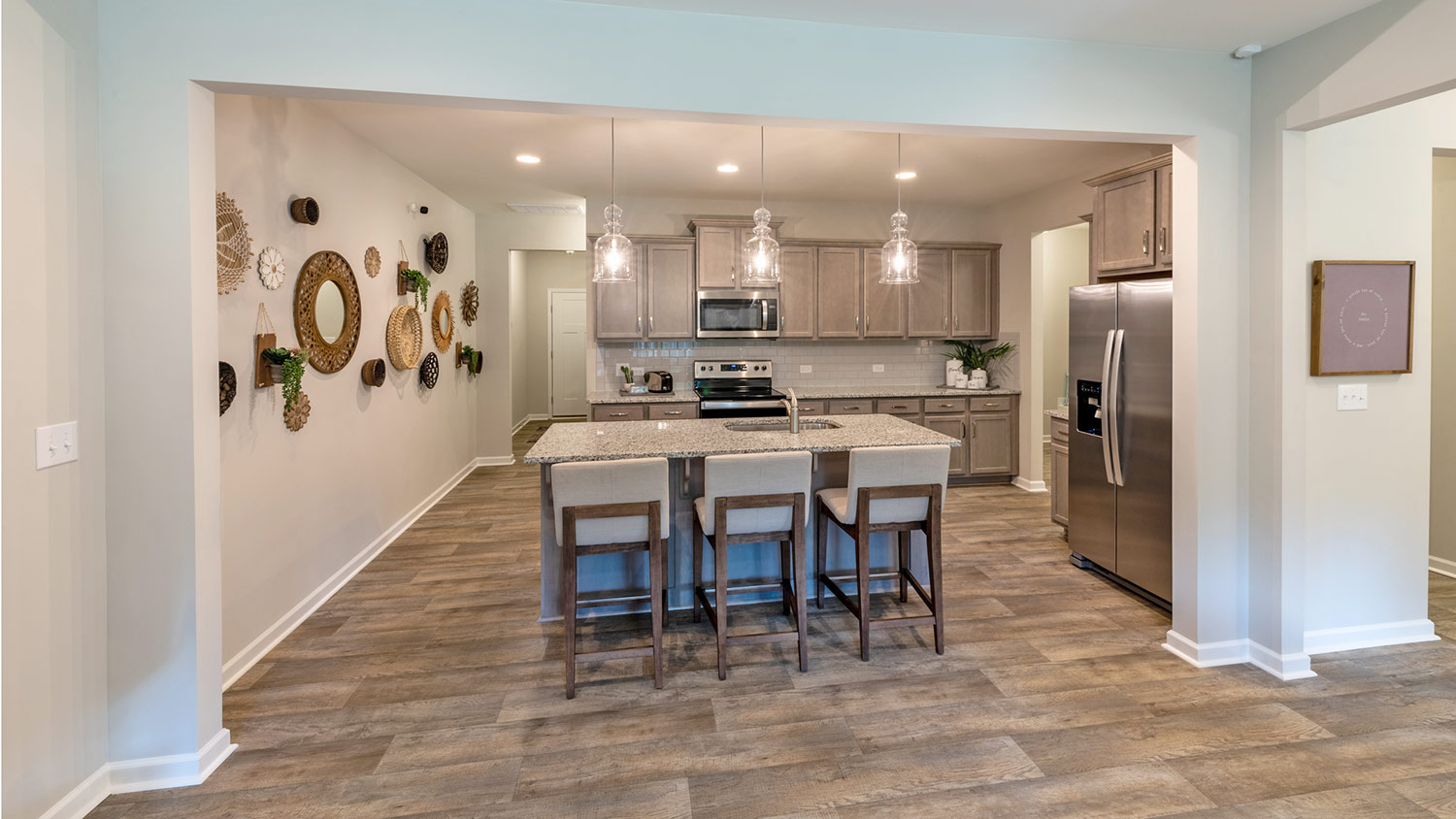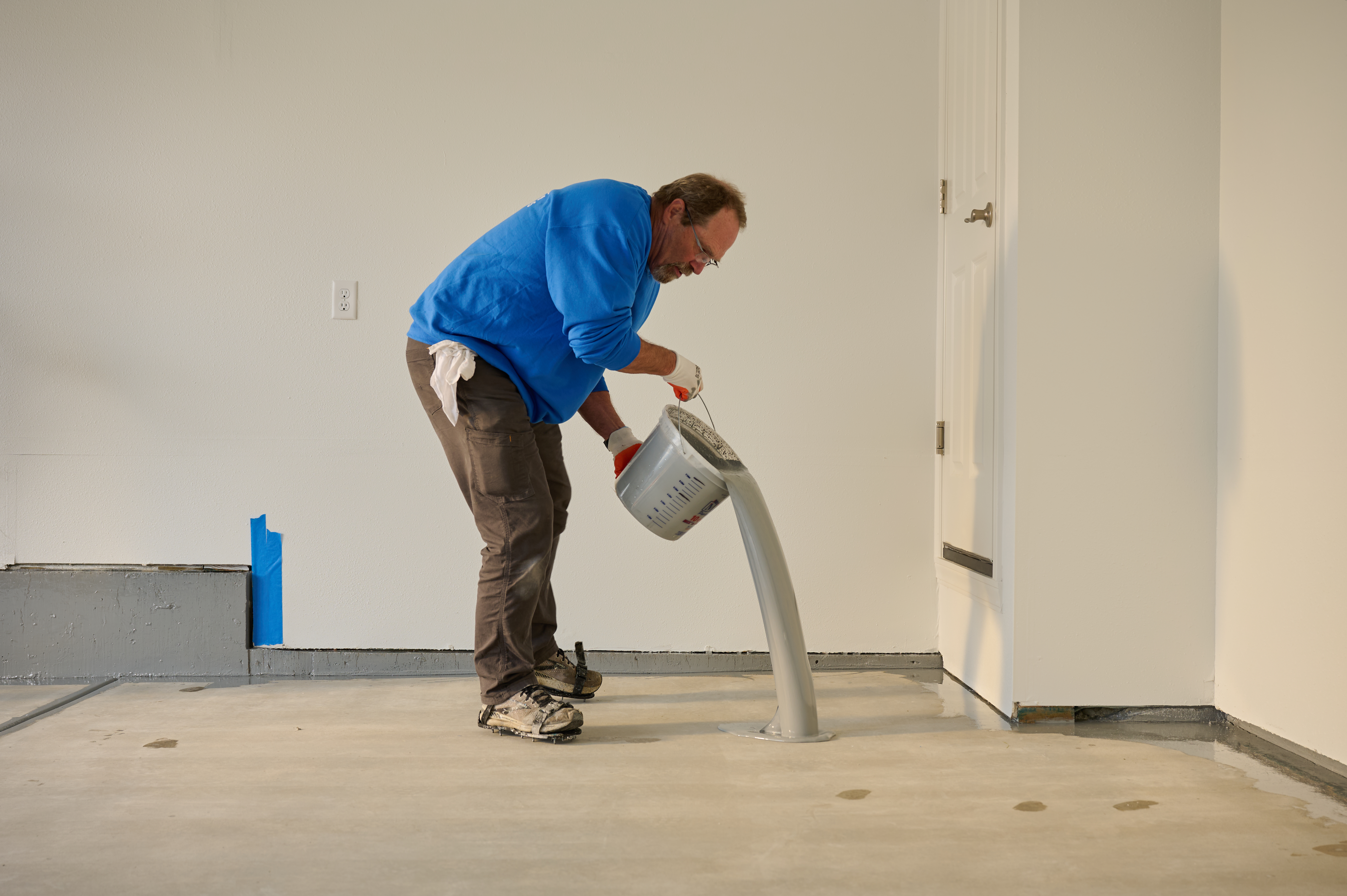
Discover stamped concrete wall cost estimates, including average prices, key cost factors, and tips to help you budget your project with confidence.
Stylish and water-resistant don’t have to be mutual exclusives


As anyone who’s ever spilled their drink on carpet knows, not all flooring is created equal, and some are better suited to moisture than others. When considering the design (or re-design) of your bathroom or kitchen, you may be wondering which of the available options is the best flooring for wet areas. The good news? In today’s market, you have plenty of options. Below, find five waterproof flooring options to consider for your next wet-area remodel.
Whether you decide to seal grout or install a water-resistant vinyl, waterproofing your flooring is crucial, especially in rooms like bathrooms or the kitchen. A flooring pro can recommend the best materials for specific areas, install new flooring, and ensure it will stand up to water.

Sometimes marketed as luxury waterproof vinyl, vinyl flooring (whether it’s planks or tiles) offers homeowners the opportunity to bring a sleek, modern look to the wet areas of their homes. Vinyl flooring is a flexible, customizable choice that can help bring a pop of color to a room or create minimalist appeal. Plus, vinyl is among the more affordable waterproof flooring options.
| Pros | Cons |
|---|---|
| Many design options available | Can swell in high temperatures |
| Durable and resistant to scratches and scuffs | Sanding and leveling of old floor may be required |
| Affordable starting price of $3 per square foot | Can’t be recycled |
Best for: Budget-conscious and stylish homeowners looking for a durable option with lots of design choices

A long-time classic for a reason, ceramic tile offers a waterproof surface perfect for high-moisture areas like bathrooms or kitchens. Maintenance couldn’t be easier: You can remove even stubborn dirt from ceramic tiles simply by wiping them with a cleaning solution or mopping them. However, tile can be uncomfortably cold and hard under bare feet, and its natural weight means it might not be suitable for floors on second and third levels. It’s also fairly effort-intensive to install, so most homeowners will want to hire a professional.
| Pros | Cons |
|---|---|
| Durable and easy to maintain | Cold and hard underfoot |
| Many design options available | Time-consuming and challenging to install |
| Easy to repair | Expensive installation at $12 to $45 per square foot |
Best for: Homeowners who like a classic look and are willing to spend more upfront for a durable option

Porcelain tile is made of a more refined mixture of clay than ceramic, so porcelain clay requires higher firing temperatures in the kiln. The result? An even more durable, denser tile type that’s available at similar prices as some types of ceramic. While both types of tile are waterproof, porcelain may be marginally more waterproof than regular ceramic. Porcelain also experiences less natural expansion and contraction, so it’s less likely to crack due to temperature fluctuations.
| Pros | Cons |
|---|---|
| More durable and waterproof than ceramic tile | More vulnerable to crack after a drop |
| Available in a wide range of designs | Difficult and expensive to install at $9 to $50 per square foot |
| Less expansion and contraction | Natural weight means it may not work in upper levels of your home |
Best for: Luxurious bathroom interiors or outdoor shower areas that won’t be heated

With its sleek contemporary design and completely waterproof nature, polished concrete is a (literally) solid option to consider when choosing flooring for your bathroom or kitchen—or anywhere else in your home, for that matter. It’s also on the more affordable end of the spectrum for long-lasting, durable waterproof floors. However, you will need to hire a local flooring company for installation if you go with concrete.
| Pros | Cons |
|---|---|
| Affordable starting price of $2 per square foot | Fewer design and color options |
| Extremely durable | Cold and hard underfoot |
| Eco-friendly | Improper installation can lead to visual defects |
Best for: Eco-conscious homeowners wanting an affordable, contemporary look

Along with its natural ability to avoid moisture damage by making water bead up, rubber is also available in a variety of fun and interesting patterns. Keep in mind, though, that it’s a very different look than your classic vinyl plank or ceramic tile. Additionally, rubber flooring can cost quite a bit, particularly for the most waterproof pour-in-place versions.
| Pros | Cons |
|---|---|
| Naturally waterproof and, if recycled, eco-friendly | Non-traditional design choice that may not suit every homeowner’s taste |
| Extremely easy to clean | Harder to find than other options |
| Offers softer, warmer feel underfoot | Costly at $16 per square foot |
Best for: Home gyms or homeowners open to non-traditional design
From average costs to expert advice, get all the answers you need to get your job done.

Discover stamped concrete wall cost estimates, including average prices, key cost factors, and tips to help you budget your project with confidence.

Pouring a new concrete floor can create new usable space for your home and raise its value. This guide breaks down what affects project costs.

Subflooring makes your floors sturdy and level. Learn more about the cost to install plywood subflooring and factors that affect the price.

If you’re dealing with warped or creaky floors, it could be a subfloor issue. This guide will show you how to replace a subfloor totally DIY.

Unleash the beauty of your space by learning how to stain hardwood floors. Whether old or new, perfectly stained floors can add character and class to a room.

Looking for cheap flooring options? Learn about vinyl, linoleum, laminate, cork, concrete, and carpeting, along with tips for finding inexpensive flooring.